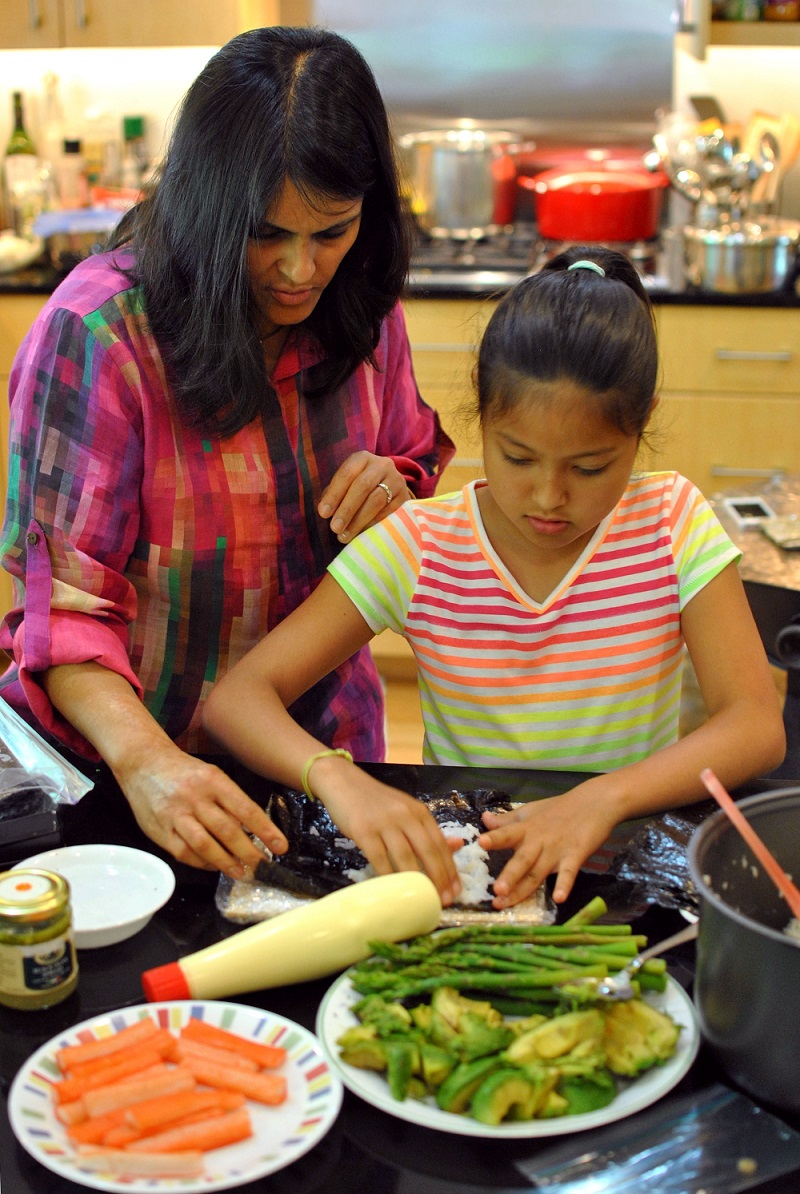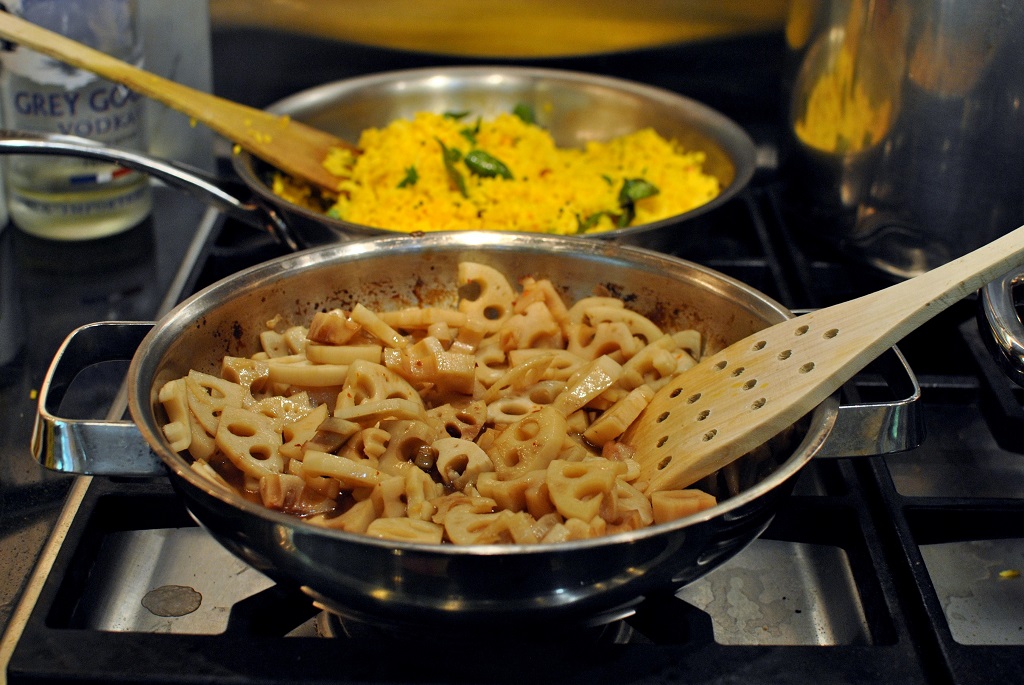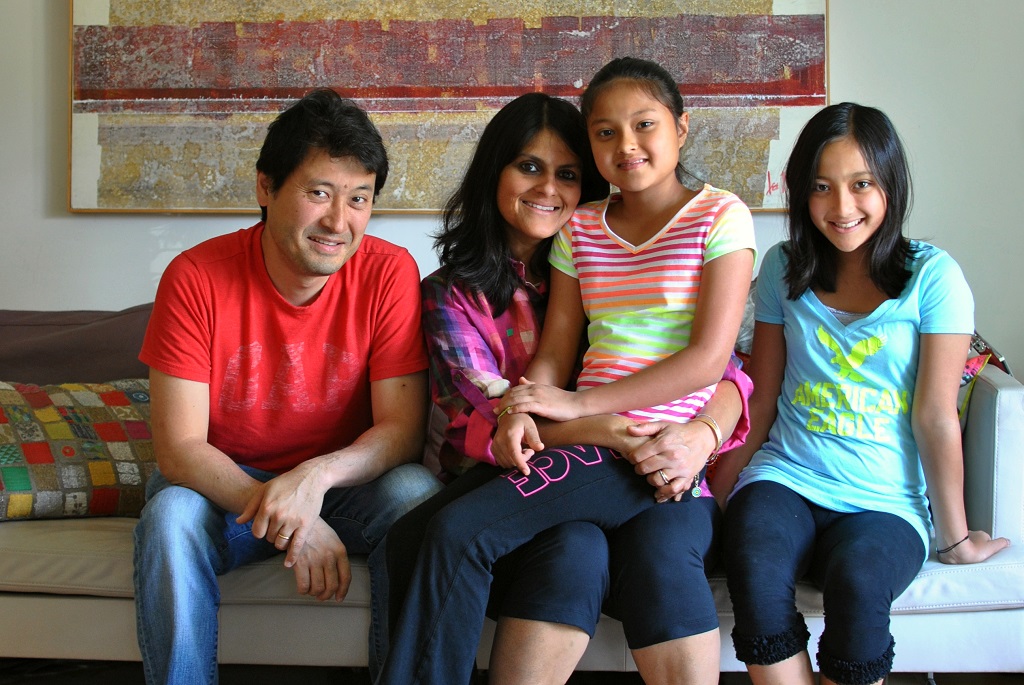Growing up in Kolkata and Chennai, Malini Sood Horiuchi’s family meals revolved around Indian staples like daal (lentils) and roti (flatbread). But today she’s making sushi with her younger daughter—first toasting delicate sheets of nori (seaweed) over the stove; then showing 11-year-old Risa how to dampen her fingers to keep the rice from sticking while spreading it across the seaweed.
Sood Horiuchi, 44, comes by her sushi skills honestly—she married into a Japanese-American family almost two decades ago.
“My mother-in-law taught me a whole different way of cooking, which is very different from the Indian way,” she says. “When I first came [to the U.S.], my exposure to food was limited. I think it’s because of [my husband’s] family that I opened up tremendously.”

Sood Horiuchi teaches her daughter to make California rolls; photo by Lily Chin, lilychin.info
Now Sood Horiuchi and her husband Yozo Horiuchi, 45, are doing their best to immerse their two daughters, Risa and her older sister Hana, 13, in both Indian and Japanese traditions—as well as the cultures and cuisines of their friends and neighbors in New York City.
“We don’t just do Indian and Japanese; we eat everything,” Sood Horiuchi is quick to point out. “I cook so many different cuisines. We love to experiment.”
Her kitchen cabinets—packed with Italian, Thai, Middle Eastern, and Japanese staples, as well as home-ground spices brought back from annual trips to India—bear that out. So does her cooking blog, where the recipes run the gamut from Trinidadian to Thai, and photos of past Thanksgiving dinners show roast turkey and pumpkin pie alongside fried rice, Goan pork vindaloo, and mushrooms and turnips in dashi.
The meal she is preparing today, for friends visiting from India, is a similar globe-trotting mix of cuisines: butter paneer, California rolls, lotus stems simmered in sweet mirin and suyu (her mother-in-law’s method), and a salad dressed with lemon juice, olive oil, and fresh mint (a recipe from a Syrian friend).
Sood Horiuchi, who does all of the cooking for her family, is always looking for new ways to combine the many cuisines she loves—whether she’s transforming leftover keema into a meat sauce for pasta or serving burgers over rice with homemade teriyaki sauce.
Read Part 3 in this series A Mexi-Jewish, Trini-Filipino Birthday Feast in Queens

Lotus stems simmered in sweet mirin and suyu (front burner); and lemon rice (back burner). Photo by Lily Chin, lilychin.info
This culinary versatility seems effortless, but it didn’t come easily. Initially Sood Horiuchi struggled with the strong fishy, fermented flavors of many Japanese dishes, and her husband Yozo still doesn’t like Indian daal (yellow lentil soup). But their efforts to bring so many global food cultures into their kitchen are paying off for the next generation.
“My kids can eat any cuisine,” Sood Horiuchi says. “I can take them anywhere, and they will find something to eat.”
Try two culture-crossing recipes from Malini Sood Horiuchi:
Fi2W is supported by the David and Katherine Moore Family Foundation, the Ralph E. Odgen Foundation, and the Nicholas B. Ottaway Foundation.




